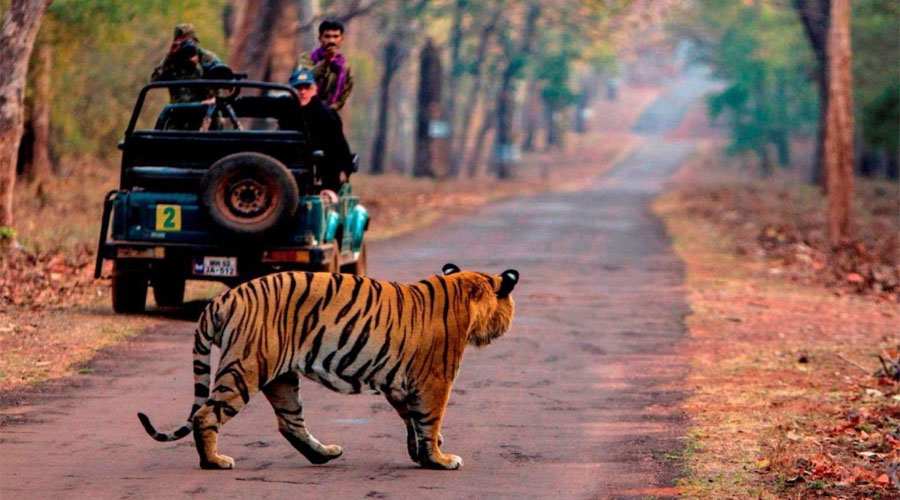Chitrakoot Dham, located on the border of Uttar Pradesh and Madhya Pradesh, is a sacred land deeply enshrined in the Hindu epic Ramayana as the forest where Lord Rama, along with his wife Sita and brother Lakshmana, spent over eleven years of his fourteen-year exile. This divine landscape, nestled along the banks of the Mandakini River, is renowned for its spiritual aura, ancient temples, and natural beauty that together weave a profound narrative of dharma, devotion, and divine presence.
Historical and Mythological Significance
According to Ramayana, Lord Rama was unjustly exiled from his kingdom of Ayodhya for fourteen years due to the demands of his stepmother, Queen Kaikeyi. After leaving Ayodhya, Rama, Sita, and Lakshmana journeyed to Chitrakoot, guided by the sage Bharadwaja, whose ashram served as their spiritual refuge. It was in this serene forest that Rama embraced the austere life of exile, engaged in deep meditation, and followed strict adherence to dharma while living close to nature.
Chitrakoot’s significance is magnified by several episodes detailed in the Ramayana. It was here that Bharata, Rama’s younger brother, came to persuade Rama to return and claim his throne after the death of King Dasharatha. Rama, upholding his father’s vow, refused to break his exile, and the touching reunion is immortalized at the Bharat Milap Temple in Chitrakoot. The place where Bharata took Rama’s padukas (slippers) to Ayodhya to symbolize the king’s presence further consolidates Chitrakoot as a pivotal spiritual landmark.
Spiritual and Natural Landscape
Chitrakoot’s terrain of lush forests, flowing rivers, and undulating hills is not only beautiful but regarded as deeply sacred. The Mandakini River flows through the region and is believed to have been a source of holy purification. Devotees bathe at Ramghat, a sacred spot where Lord Rama is thought to have taken a dip to cleanse his soul during exile. Kamadgiri Hill, worshipped as the embodiment of Lord Hanuman’s devotion, further enhances the divine geography of the area.
The region was favored by several ancient sages and hermits, including Bharadwaja, Atri Muni, and Sage Agastya, who meditated and lived in seclusion amidst its tranquil surroundings. Their presence transforms Chitrakoot into a timeless hermitage, embodying the highest spiritual ideals of asceticism and devotion.
Important Pilgrimage Sites
Chitrakoot Dham is dotted with numerous temples, caves, and sacred sites linked to the Ramayana’s narrative. Key locations include:
- Bharat Milap Temple: Commemorates the reunion of Rama and Bharata, a poignant moment showcasing brotherly love and sacrifice during exile.
- Ramghat: A revered riverfront where pilgrims perform rituals and take holy dips in the Mandakini River.
- Kamadgiri Hill: Revered for its spiritual significance, this hill is worshipped like a deity and surrounded by temples.
- Gupt Godavari Caves: Believed to be sanctified by Rama and Lakshmana during their exile, these caves have twin caverns with stone thrones attributed to them.
- Sati Anasuya Ashram: Dedicated to the wife of sage Atri, this ashram highlights the spiritual legacy of sages who lived in Chitrakoot.
Cultural and Religious Importance
Beyond its mythological significance, Chitrakoot remains a vibrant pilgrimage destination attracting millions annually. The confluence of spirituality, nature, and legendary tales makes it a site of continuous worship, festivals, and rituals honoring Lord Rama and his virtues. The stories of Rama’s dedication to dharma during exile inspire devotees to uphold righteousness and resilience in their own lives.
Conclusion
Chitrakoot Dham in Uttar Pradesh is not merely a geographical location but a living saga of devotion, exile, and spiritual enlightenment from the Ramayana. The sacred land, with its historical temples, serene rivers, and mystical hills, preserves the divine memory of Lord Rama’s exile years. It stands as a beacon of dharma and devotion, inviting pilgrims and seekers to immerse themselves in its ancient spiritual heritage and tranquil beauty.
This sacred land embodies the essence of Lord Rama’s sacrifice and moral steadfastness, making Chitrakoot Dham a timeless pilgrimage and an integral chapter in India’s cultural and religious tapestry.


